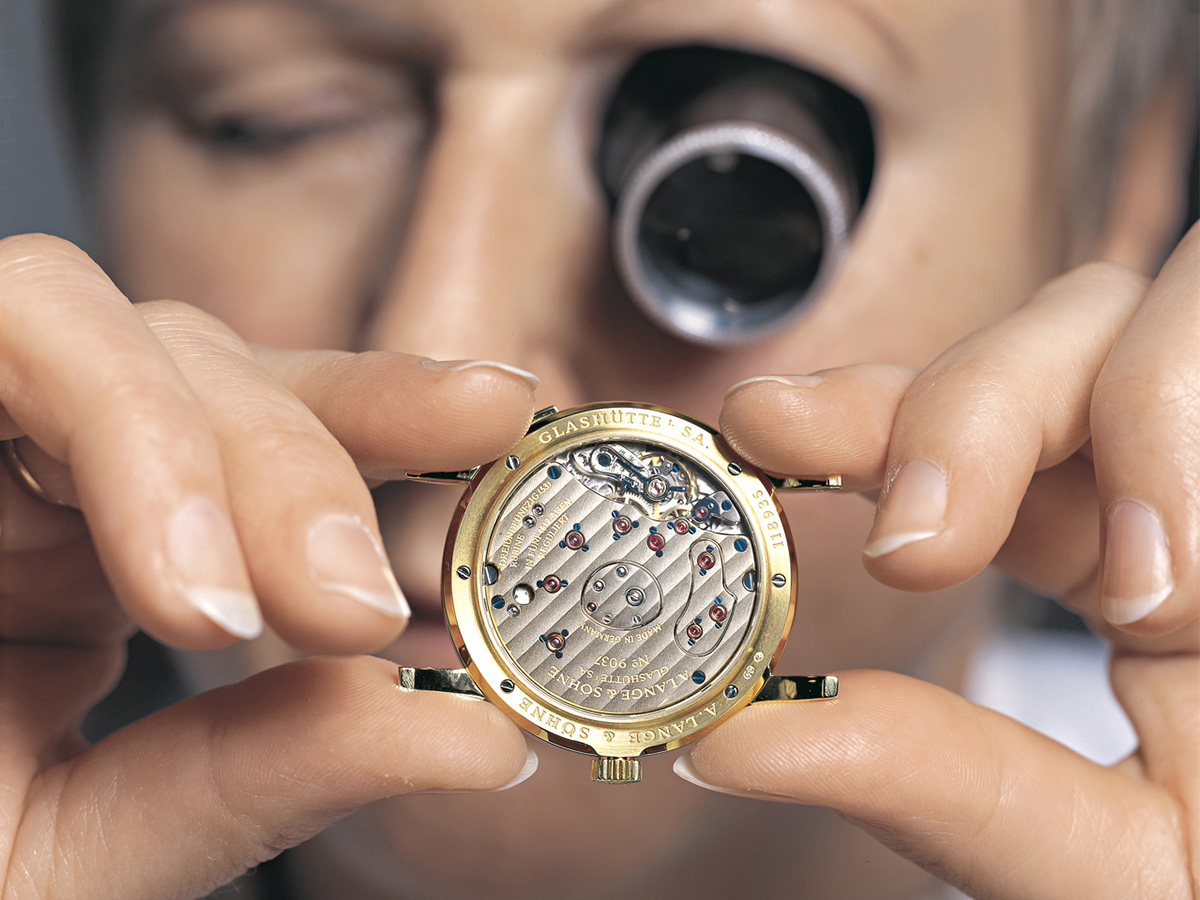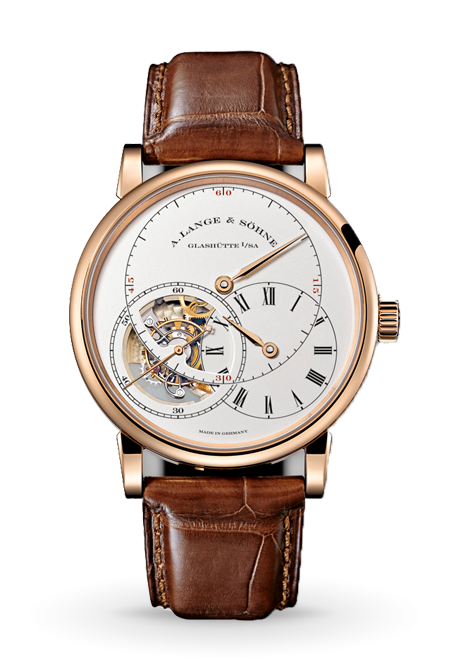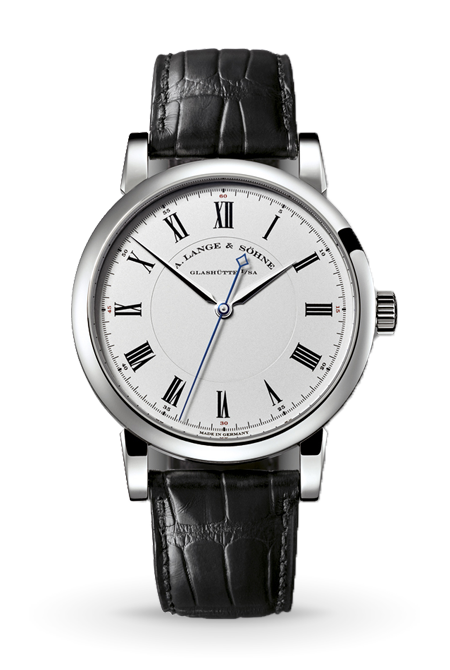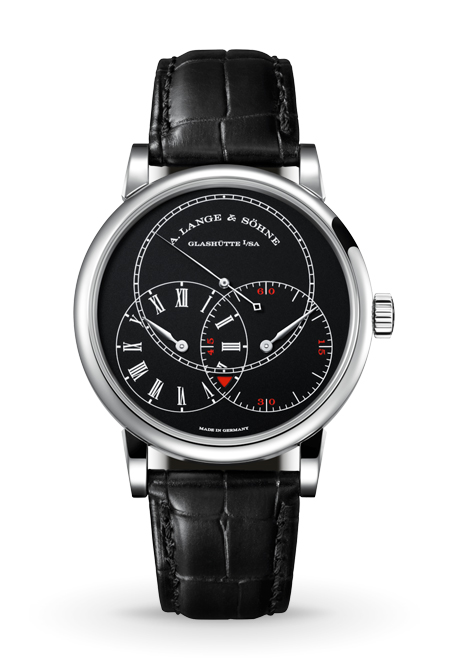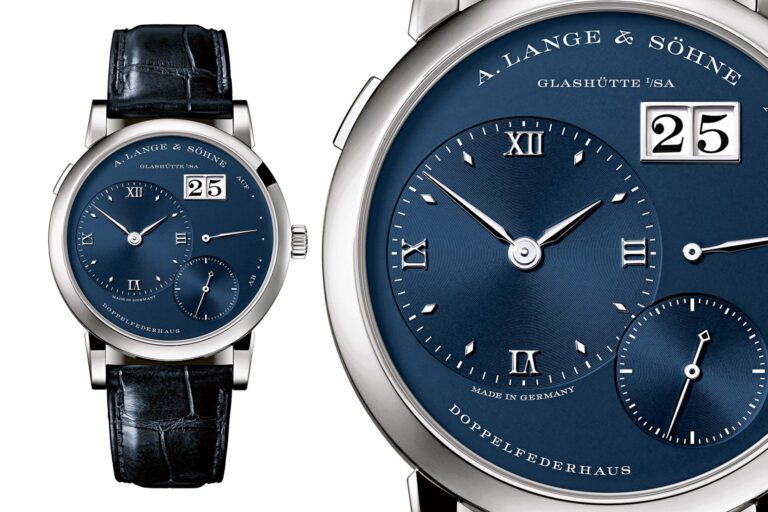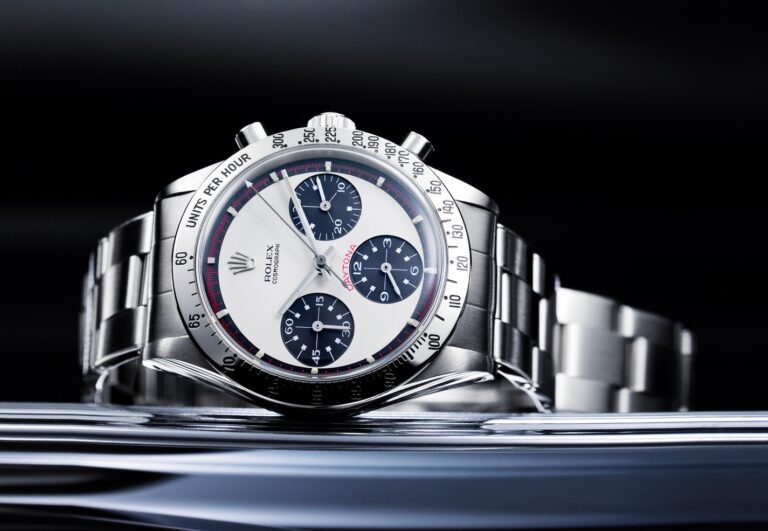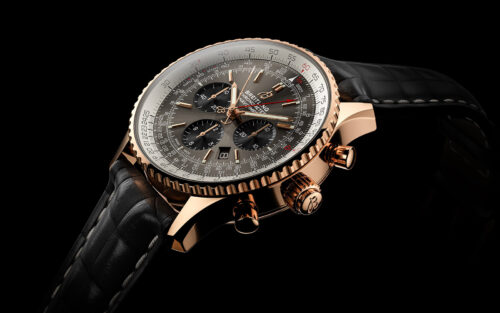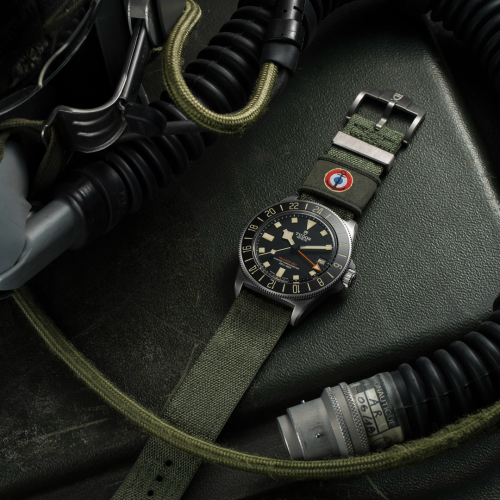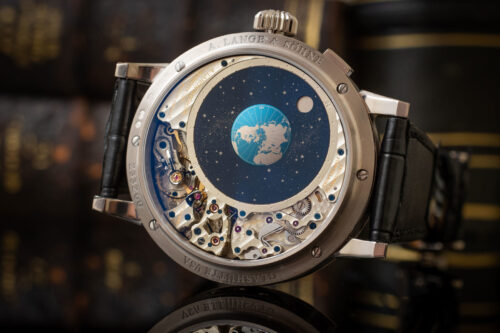The Twofold Assembly
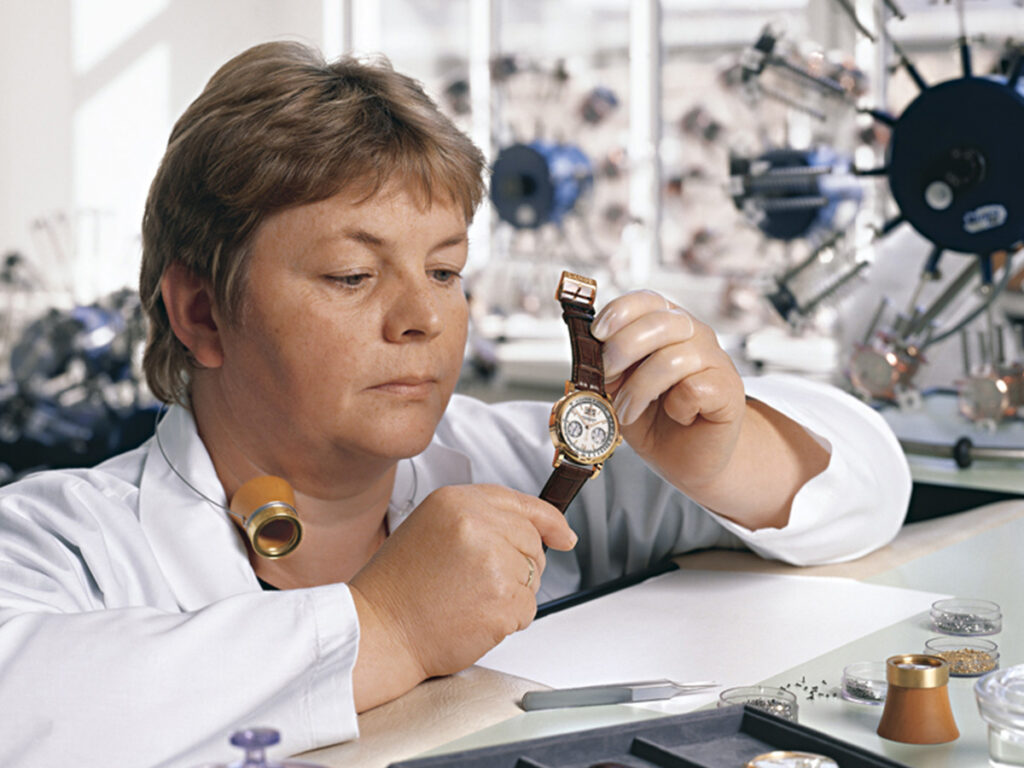
A. Lange & Söhne is not accustomed to compromise. It’s simply not in the German watch brand’s DNA. As such, when it comes to the design, manufacture and assembly of its incredible timepieces, there is only one way; the Lange way. Simply put, this means sparing no effort to create a timepiece that is as near perfection as possible. And not just the complicated ones. Every timepiece. This unyielding dedication to maintaining unimpeachable quality standards is perhaps best encapsulated by its strict adherence to the rule that every movement must be assembled twice. Be it for a simple three-hander or a multi-complication. That means that after countless hours spent assembling and adjusting the various mechanical parts to achieve the highest degree of precision, each movement is disassembled, and then reassembled again.
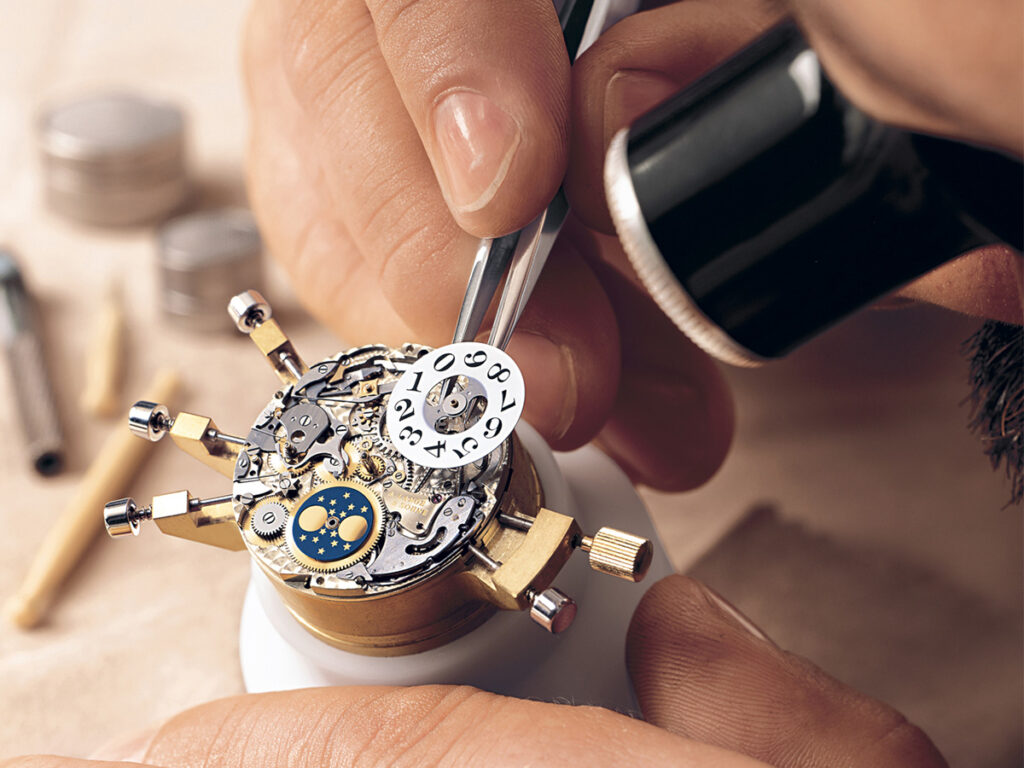
At first read that might seem counterintuitive. Confusing even. But consider these two elements that make a Lange calibre so special. First is the three-quarter plate introduced by company founder Ferdinand A. Lange in 1864. This ingenious design enhances precision by stabilising the entire wheel train beneath a single bridge. And second is the material that all Lange plates (and bridges) are made of; German silver. Responsible for the rigidity of the movement and, over the course of time, producing a warm, golden patina that protects the surface. Both elements were chosen specifically to improve the overall experience for the owner. But they don’t come without their challenges for the watchmaker.
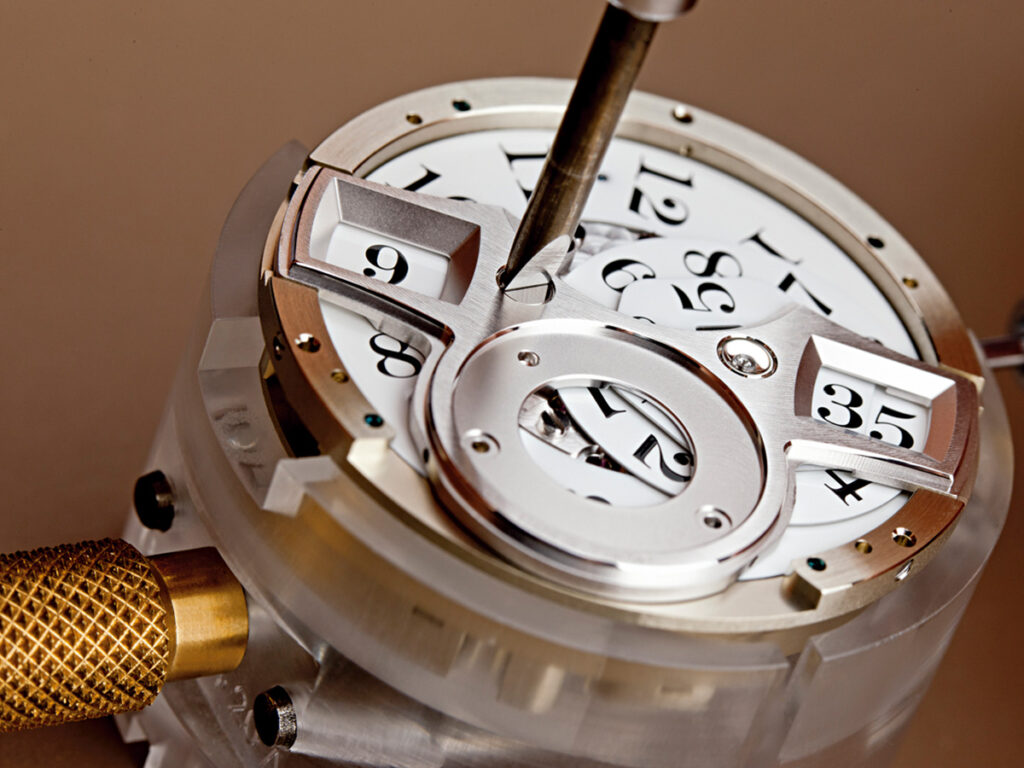
The case for assembling a Lange movement twice
Although the three-quarter plate offers superior stability, its design is such that even an experienced watchmaker has to mount and remove it several times in succession in order to find the optimal endshake for each individual arbor. German silver though has a very sensitive surface, which means even the lightest fingerprint can leave a blemish. Likewise, tools such as screwdrivers can inadvertently cause scratches. For this reason, an initial assembly is undertaken before final decorations are added to the plate and other ornamented parts. In this way, the calibre assembled for the second time can be presented at its best. Both in terms of precision and appearance.
Now, assembling any sort of calibre is a time-consuming and demanding process. But consider the level of craftsmanship that goes into a Lange movement. And the fact that it is assembled twice. You start to gain an appreciation for the level of concentration, hand/eye coordination and dexterity it requires. Not to mention the limitless patience. To illustrate this point, we follow the process of assembling one of Lange’s more complicated models: the RICHARD LANGE TOURBILLON “Pour le Mérite”. Where the designation of ‘Merit’ refers directly to the feat of assembling this watch. Two times over.
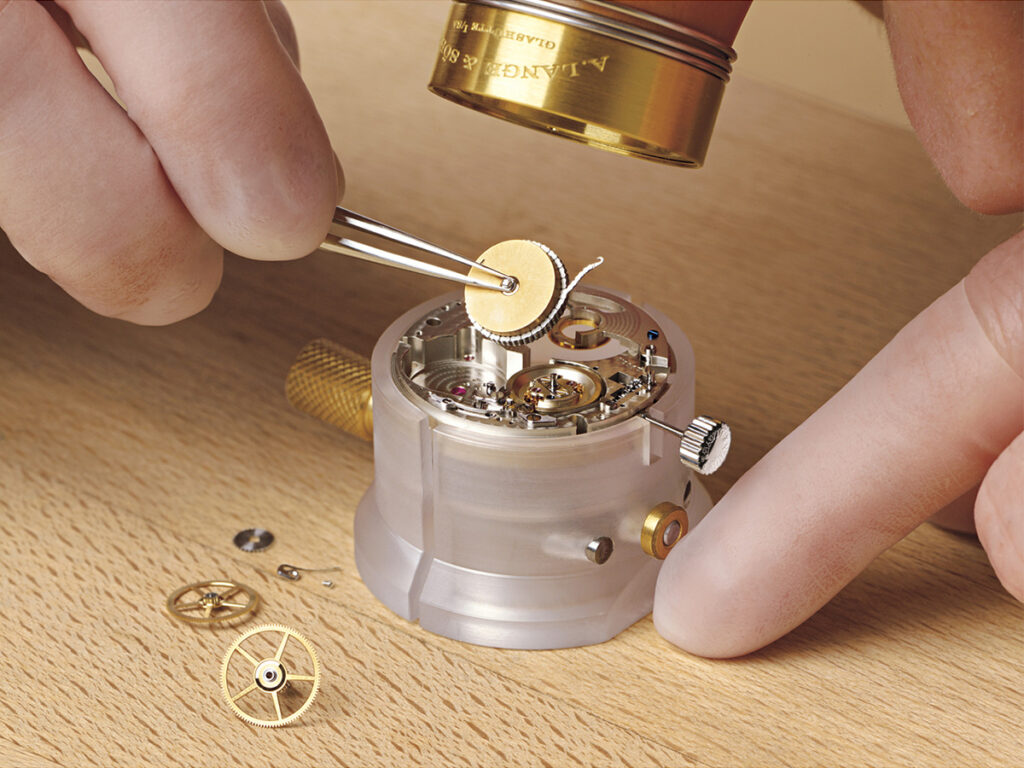
RICHARD LANGE TOURBILLON “Pour le Mérite”
The RICHARD LANGE family seeks to revive the scientific precision of historical observation watches. Noted for their high degree of rate accuracy and good legibility. These instruments served as indispensable aids to numerous highly regarded academics, researchers and explorers during the 18th and 19th centuries. Thus, the design of any modern RICHARD LANGE timepiece must incorporate two priorities above all else: highest precision and best possible legibility.
With fusée-and-chain transmission and a one-minute tourbillon the RICHARD LANGE TOURBILLON “Pour le Mérite” incorporates two of the most effective complications for increased rate accuracy. While its regulator dial – inspired by Johann Heinrich Seyffert’s precision chronometer No. 93 – provides excellent legibility. (The gifted watchmaker established the fundamentals of precision timekeeping in Saxony in the late 18th century.) Assembling the movement for this watch once, let alone twice, demands a passionate and obsessive attention to detail.
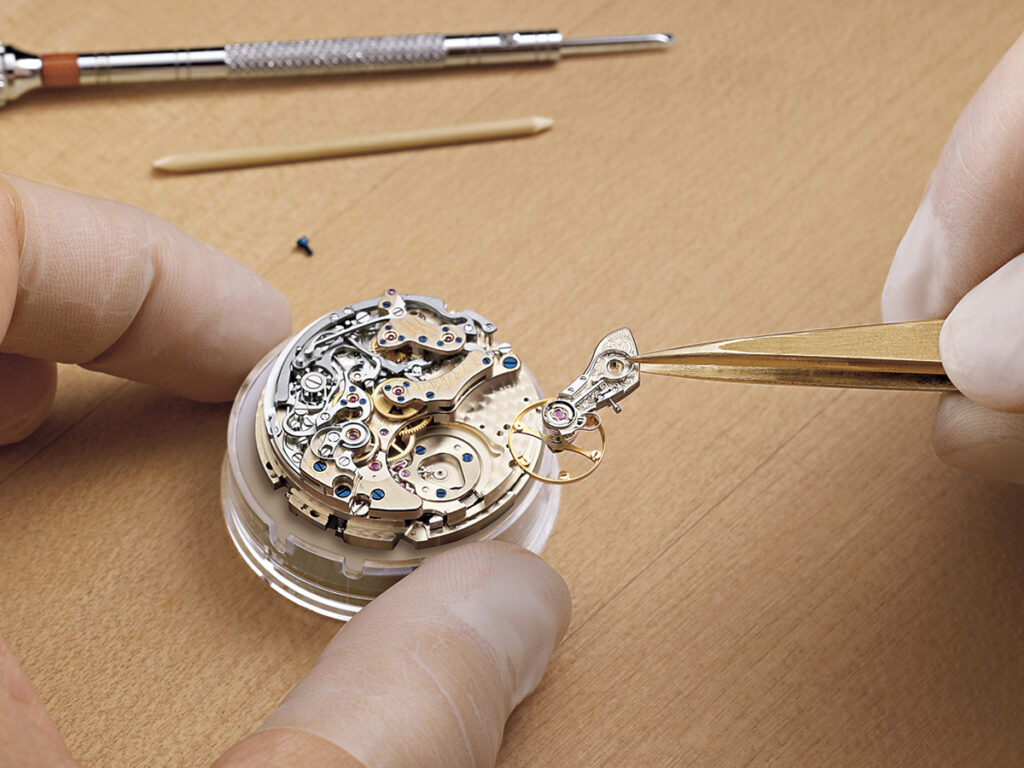
The first assembly
Each Lange calibre has an ordered number of meaningfully organised assembly steps. The many parts, lavishly finished by hand, are first clustered into “subassemblies”. The chain for instance – consisting of more than 600 parts – must first be assembled and carefully wound around the spring barrel. These in turn are then brought together to construct the movement.
A very special subassembly involves the tourbillon. 84 individual components must be synthesised into a connected whole weighing no more than one-fourth of a gram. To this task, a small group of specially-trained watchmakers devotes its undivided attention. Employing a keen eye matched with superb dexterity.
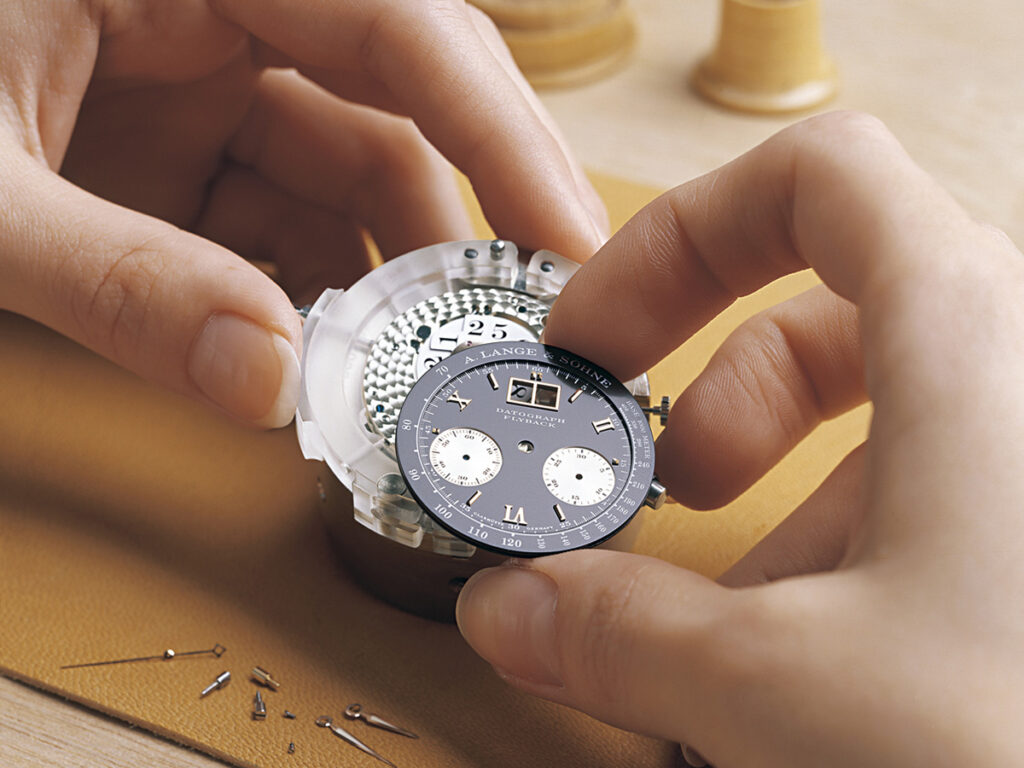
Likewise, the planetary gearing subassembly requires extremely refined skills. Having 38 tiny parts that must be accommodated in the fusée, which has a diameter of only ten millimetres. A special tool is then used to fit the chain into the fusée’s grooves. Once these subassemblies have been brought together, the movement is handed over to the réglage specialists.
From five positions, the assembly is painstakingly adjusted. To allow all the individual mechanisms to operate precisely as intended. (An engraving in the plate bears testament to this all-important procedure.) Next, the wheel train that turns the hands is mounted on the dial side. Followed by the pivoting-dial segment mechanism, which is positioned and secured with screws.
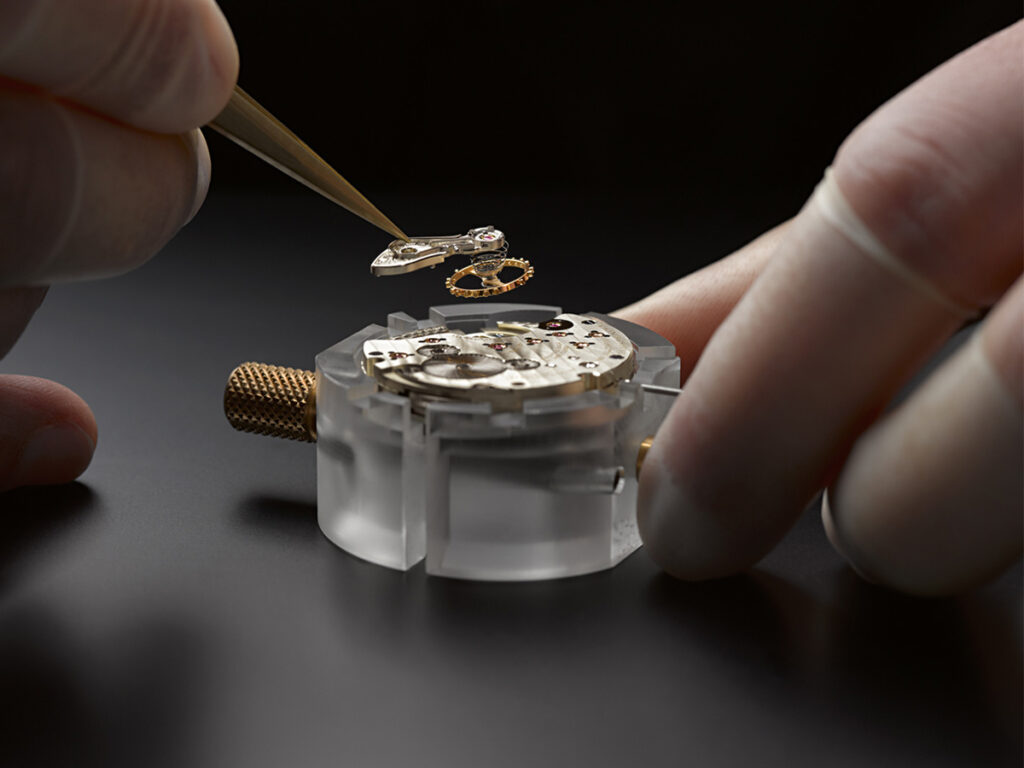
Both procedures challenge the watchmaker’s dexterity to adjust the individual endshake tolerances. This refers to the amount of vertical play given to each pivot in a jewel-hole. A certain amount is necessary for the wheel train to function smoothly. Finding the right endshake for all arbors of the pivoting-dial segment mechanism may take several attempts.
After the tourbillon cage has been integrated and attached to its bridge, the final step is to add the pivoting-dial segment. (Advanced by 90 degrees every six hours, by its mechanism.) The segment’s cut-outs fully expose the tourbillon between the hours of 12 to 6 o’clock. While providing precise time reading of the hours – VIII, IX and X – between 6 to 12 o’clock. This completes the first assembly.
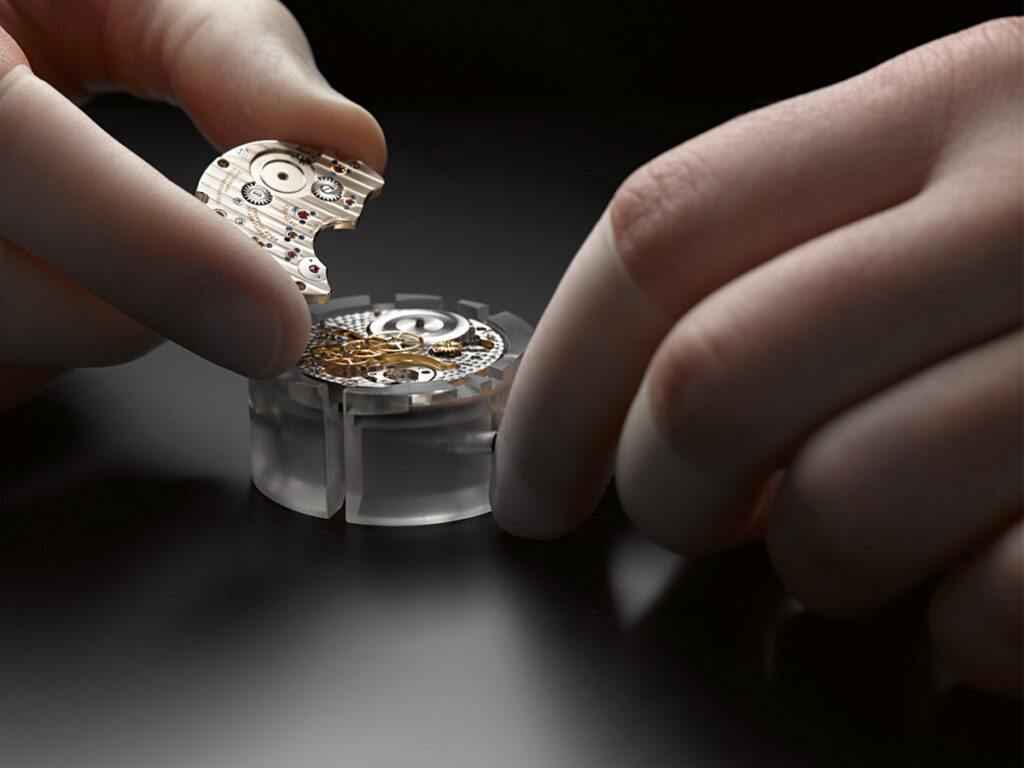
Taking it apart
For a normal watch assembly, the next phase would be to install the perfectly adjusted movement into its case. But reaching this stage at Lange signals the point to entirely disassemble the calibre. All parts are subsequently cleaned using an ultrasonic bath.
Only now are certain parts hand-decorated and polished. This ensures the flawless presentation of components on display through the sapphire-crystal caseback. But also includes parts that will later remain unseen. The second and final assembly can then commence.
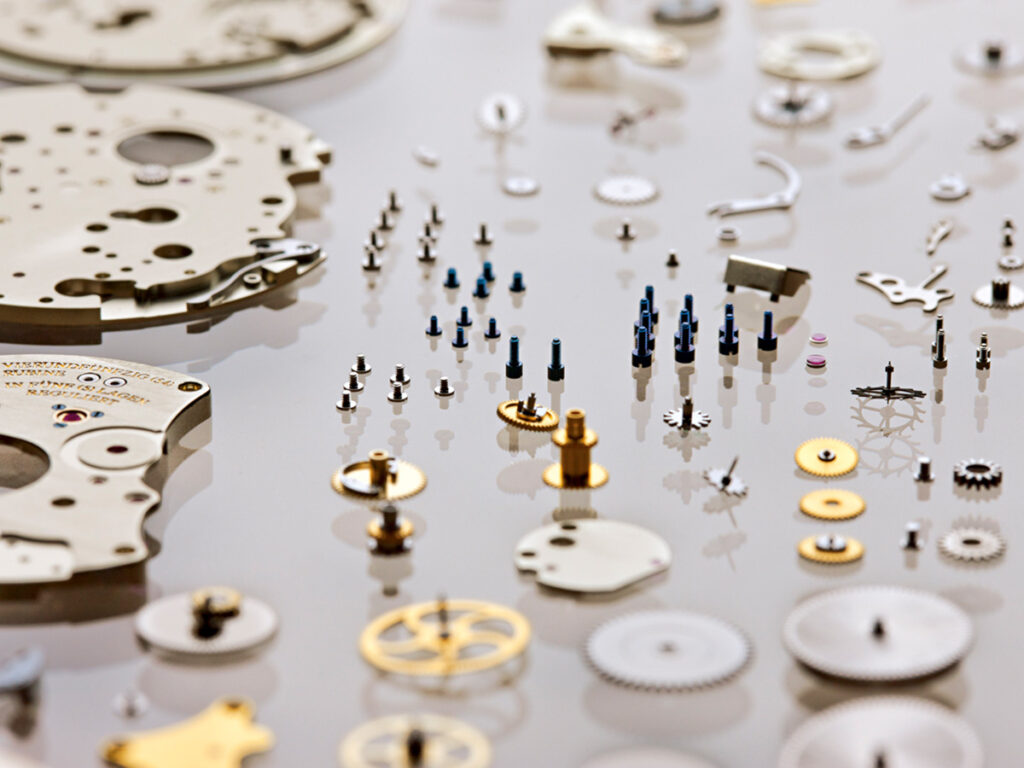
The second assembly
The second time through, a single watchmaker is responsible for the entire assembly. The three-quarter plate now bears its characteristic Glashütte ribbing. All gold chatons have been mirror polished and carefully inserted (into the plate). In place of the jig screws previously used to assemble the raw movement, gleaming new, thermally blued screws now hold the parts in place.
Up to eight different greases and oils are used to carefully lubricate over 50 oil sinks and bearing points during the second assembly. The last step of the process is the placement of the pre-tensioning ratchet. Finally, the movement can be cased up. The watch must then prove itself through an accurately defined procedure that can last several weeks. Testing its functional integrity and precision. After a strict final inspection, it’s ready for delivery.
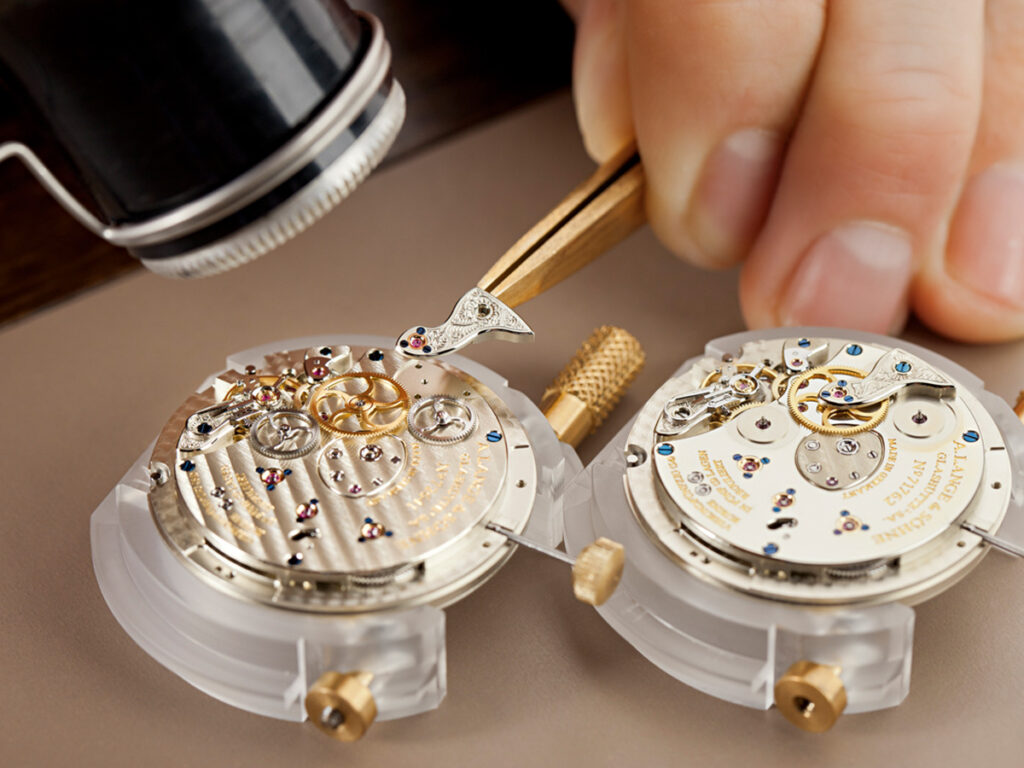
And while not every Lange timepiece is as complicated as the RICHARD LANGE TOURBILLON “Pour le Mérite”, every single one is subject to the same stringent quality and testing standards. So now, the next time you look down at your wrist and see a beautiful Lange timepiece looking back up you, take a moment to think about the countless hours and effort expended in creating this piece of pure mechanical perfection. This is what a watch constructed without compromise looks like.
To take a deep dive into the incredible world of Lange for yourself, please come and visit us at the A. Lange & Söhne Sydney Boutique, where our friendly and knowledgeable staff are ready and waiting to answer any and all of your questions.








 Rolex
Rolex A. Lange & Söhne
A. Lange & Söhne Blancpain
Blancpain Breguet
Breguet Breitling
Breitling Cartier
Cartier Hublot
Hublot Vacheron Constantin
Vacheron Constantin IWC Schaffhausen
IWC Schaffhausen Jaeger-LeCoultre
Jaeger-LeCoultre OMEGA
OMEGA Panerai
Panerai Roger Dubuis
Roger Dubuis TAG Heuer
TAG Heuer Tudor
Tudor FOPE
FOPE Agresti
Agresti L’Épée 1839
L’Épée 1839



